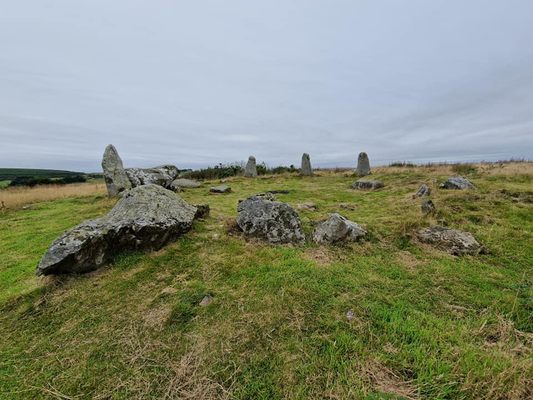About
Recumbent stone circles were erected in the early Bronze Age, their main identifying feature is that the largest (recumbent) stone is laid on its side horizontally.
Usually, the recumbent stone is constructed so that it is laid with a long axis aligned with the perimeter of the ring. To either end of the recumbent stone are two flanking stones, standing in the more traditional upright position. The flanking stones will usually be the tallest stones in the circle.
Aikey Brae has five stones that have survived in their upright position, with five further stones that have fallen. There are rumors of a missing stone that is no longer at the location. The recumbent stone at Aikey Brae is one of the largest to be found in Aberdeenshire. The stone weighs around 21 tons.
It is thought that Aikey Brae was constructed around 4,000 years ago. Like most ancient structures of the sort, the exact purpose of the circle is still debated. Unlike other such structures that were used as cremation cemeteries, with cairns constructed in the center of the circle, there has been no evidence found that Aikey Brae was used in this manner.
Related Tags
Know Before You Go
There is small parking at the end of the path up to the stone circle.
Flavors of Scotland: Beyond the Haggis
Smoked seafood, single malt whisky, and warm hospitality.
Book NowPublished
November 29, 2022




























